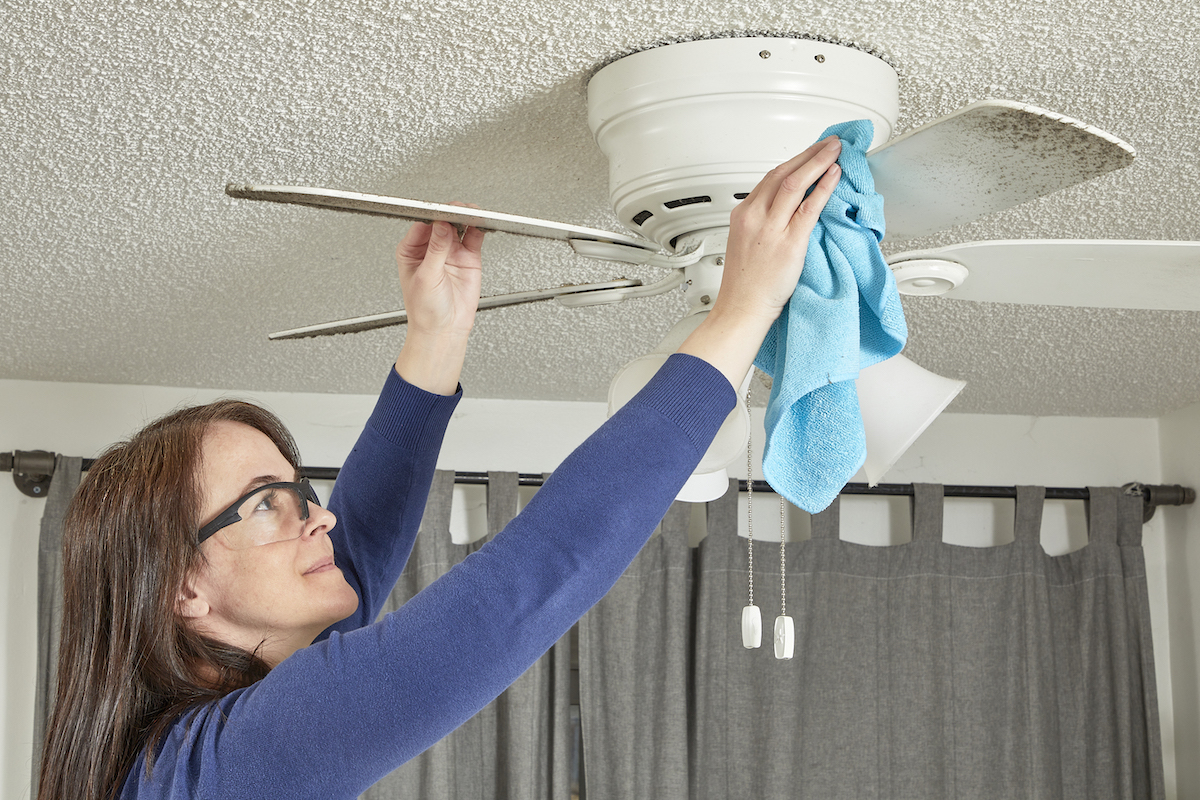We may earn revenue from the products available on this page and participate in affiliate programs. Learn More ›
Ceiling fans are useful additions to any room. They provide a cool breeze when it’s warm, circulate stale air, and contribute a decorative accent to your home’s interior. Like other appliances, ceiling fans also collect dust and grime that lead to noisy operation, wobbling, and eventually, motor damage. What’s more, a dusty ceiling fan will circulate particles every time you turn it on.
To keep your fan running smoothly and cut down on dust in your home, you should dust fan blades weekly with a specialized ceiling fan duster that slides over fan blades, simultaneously cleaning both the top and bottom. Avoid bending, breaking, or warping the blades by being careful not to press down too hard when dusting.
Never use abrasive cleaners or toxic chemicals on fan blades, as these products can scratch or discolor the fan blades and motor housing. Other cleaners to avoid include alcohol, baby wipes, and alkaline cleansers, which contain harsh compounds that can stain or destroy the finish on the blades.
Cleaning a ceiling fan light involves some of the same steps that are followed in how to clean ceiling fans, but cleaning the light’s glass housing involves special handling. Follow these easy steps for the best way to clean ceiling fan blades and lights so you can breathe easier, and reduce the dust that is dispersed around your home.
Tools & Materials
Bobvila.com may earn a commission from purchases made through these links.
- Step stool or ladder
- Ceiling fan duster or telescoping duster
- Old bed sheet or drop cloth
- Microfiber cloths
How to Clean Ceiling Fan Blades
Step 1: Turn off the fan and protect the space under the fan.
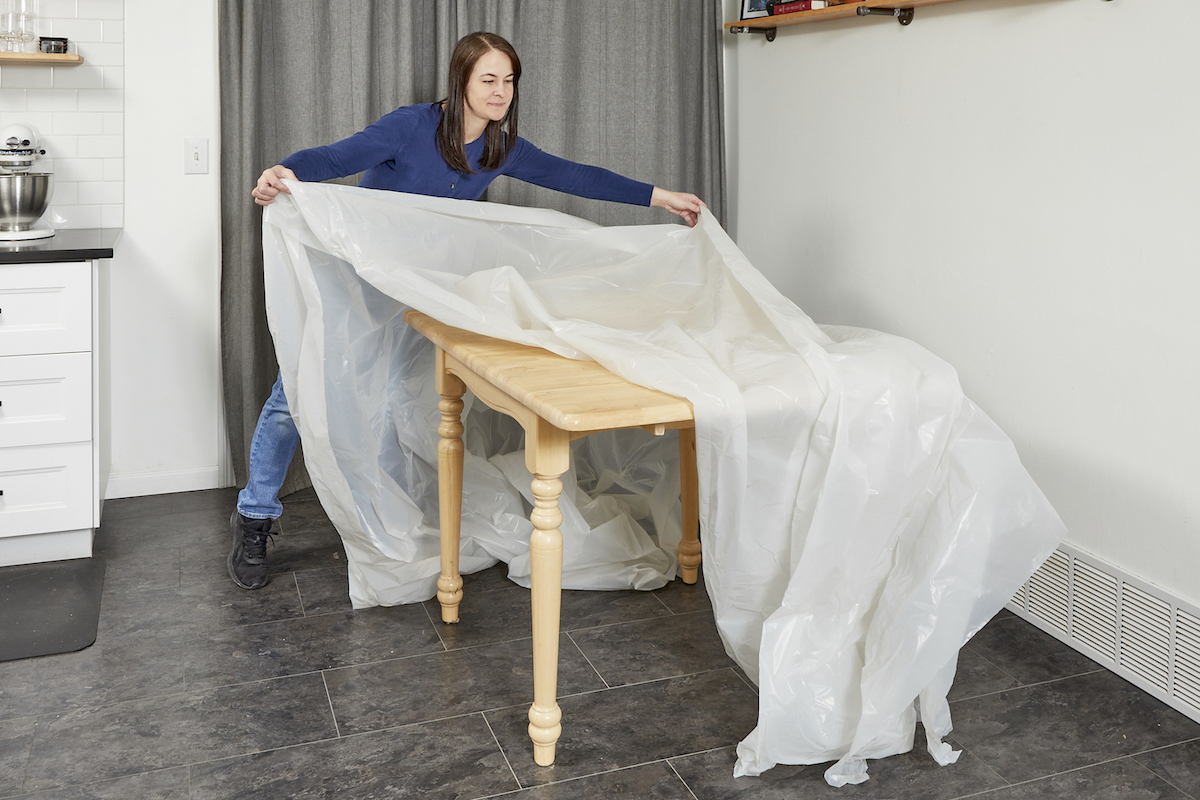
Turn off your ceiling fan, and wait for the blades to come to a complete stop. If you see a lot of dust buildup on the fixture and blades, stretch an old sheet or a drop cloth on the floor beneath the fan (and cover furniture, televisions, stereo equipment, and bookcases).
Be sure to stretch the sheet tightly to prevent tripping. Next, gather your supplies and position yourself for the best and safest approach.
Depending on the height of the ceiling, you may need need a step stool, step ladder, or extension ladder to reach the fan. For routine dusting of fan blades, you can purchase telescoping dusters with flexible heads, which will allow you to keep your feet on the ground while dusting. The best way to clean ceiling fans thoroughly, however, is to get as close to the fan as you can manage safely.
RELATED: The Best Ceiling Fans to Keep Your Home Breezy Without Cranking the AC, Tested
Step 2: Clean the blades and motor housing.
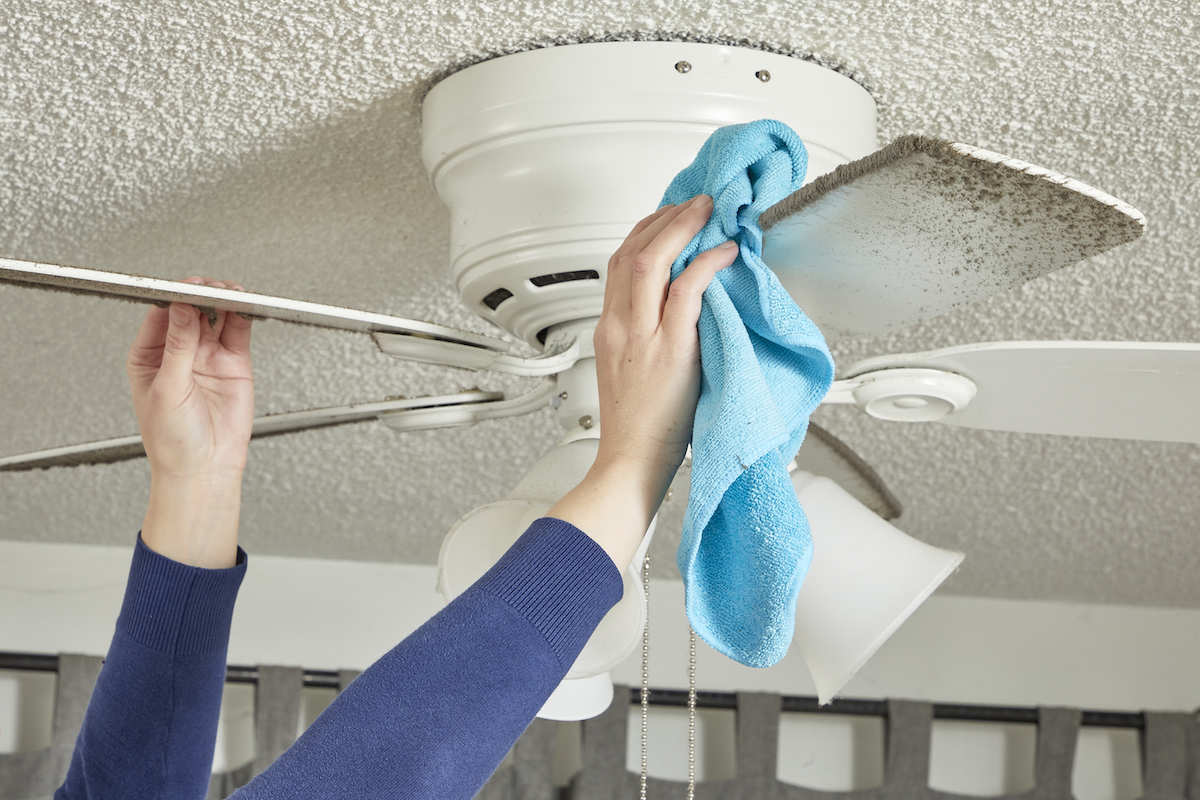
Standing on a step stool or ladder, carefully wipe each fan blade with a ceiling fan duster or clean, dry microfiber cloth. If it is safe to do so, you can run a vacuum with an extended hose and dust attachment gently across the blade tops. For deeper cleaning, carefully go over the blades with a water-dampened microfiber cloth or terry towel and allow them to dry completely.
Use a clean, dry cloth to remove dust from the motor housing and any pull chains. For a more thorough cleaning, spray the motor housing with compressed air to remove interior dust. Do not let liquid get into the housing.
Step 3: Finish with a dust-repelling spray.
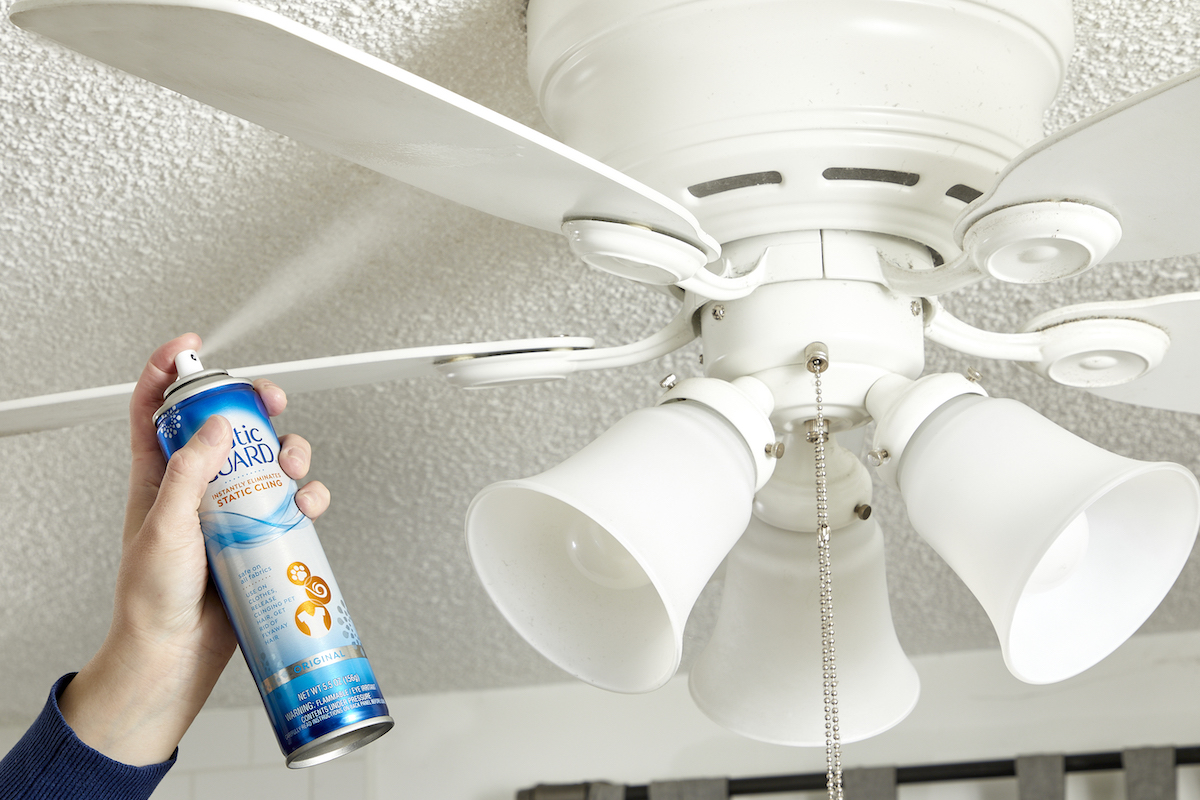
Once your blades are clean, use a commercial anti-static, dust-repelling spray like Endust to help them stay that way. Spray the product onto a clean microfiber cloth and wipe both sides of each blade. If you prefer to make your own anti-static spray, mix one part fabric softener to four parts water in a spray bottle.
How to Clean a Ceiling Fan Light Fixture
Step 1: Turn off the fan and remove light bulbs.
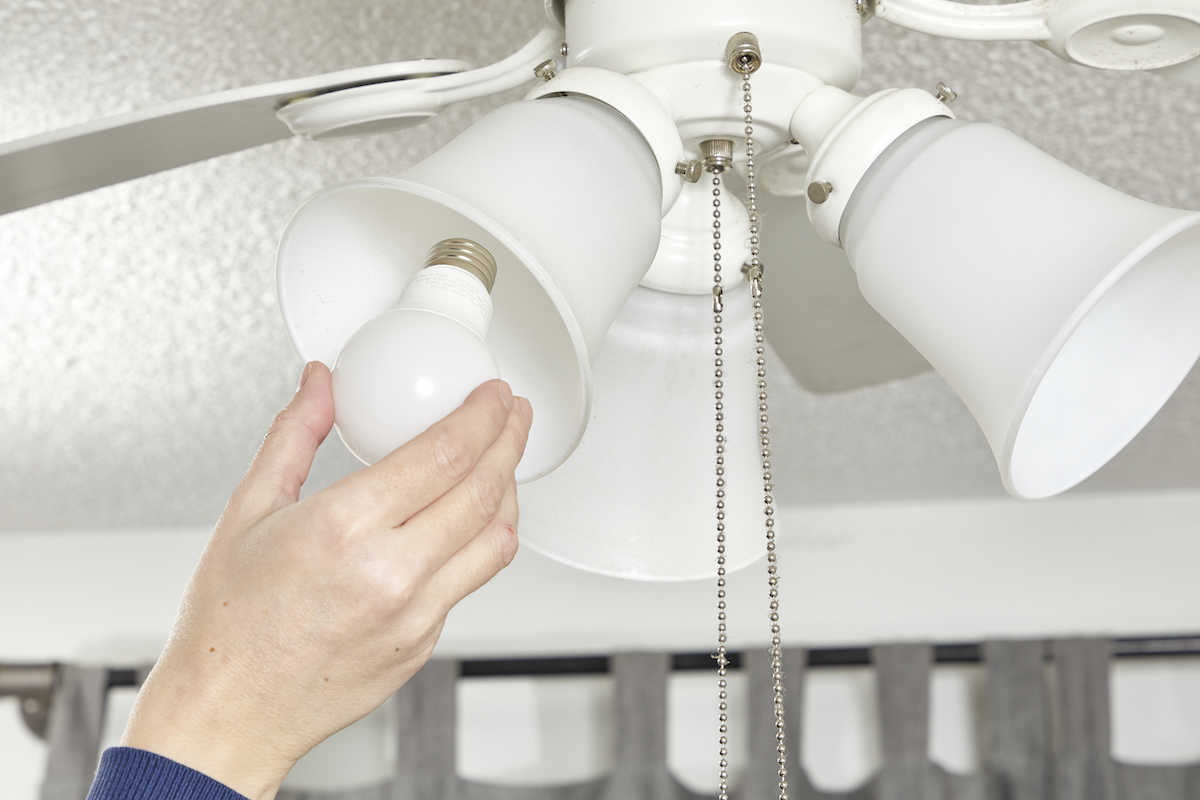
Be sure to turn the fan off before you begin cleaning the light fixture. Set up a step stool or ladder so the fixture is within easy reach. Remove the light bulbs and take off any globes or glass shades around the bulbs by carefully turning their mounting screws counterclockwise.
On some styles of ceiling fans, you have to remove the shade to access the bulb. Other globes are open at the bottom so the light bulbs can be easily removed. Keep a small cup or bowl nearby into which you can place any screws or washers you remove from the glass globes.
Step 2: Wash the shades with soapy water.
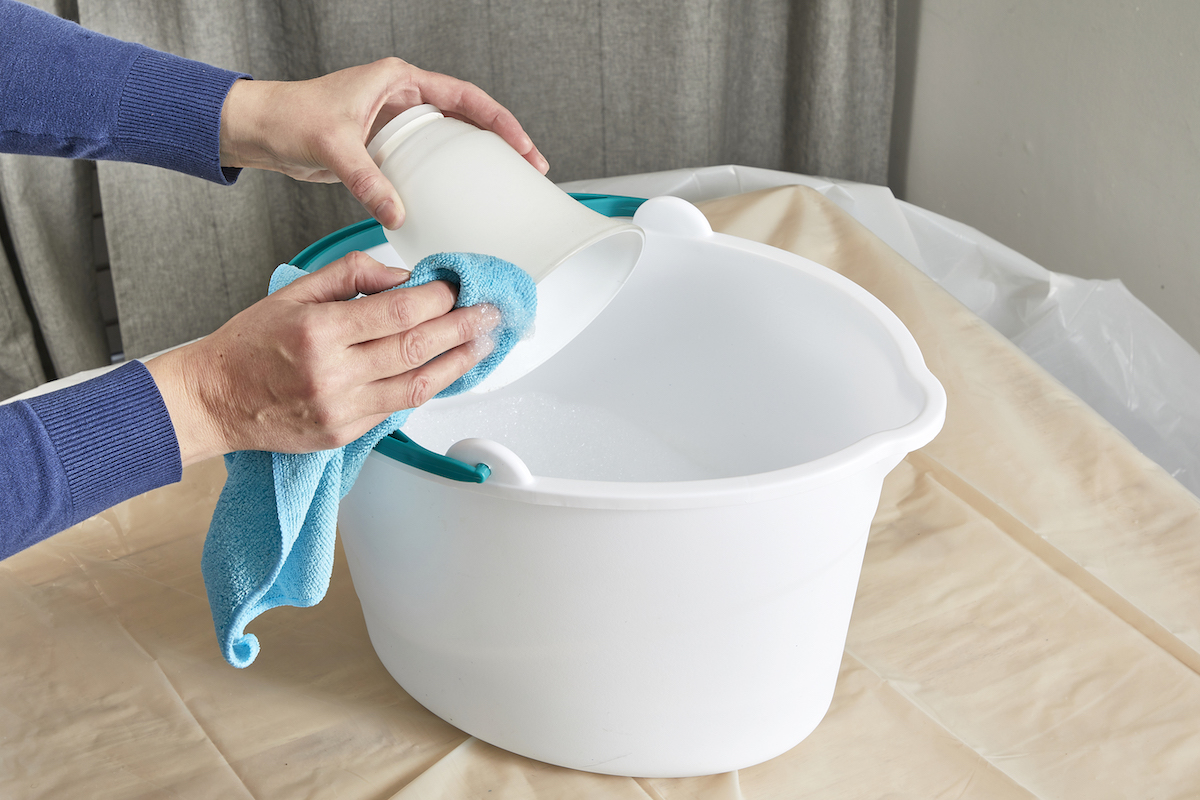
All parts of a fan and light can gather dust and dirt, and it’s not at all unusual for dead bugs to collect inside light shades or globes. After removing the fixture’s glass shade or globe, be sure to dump out any debris and then wash it in warm, soapy water and dry it thoroughly before placing it back in the light fixture.
RELATED: How To: Balance a Wobbly Ceiling Fan
Step 3: Carefully wipe the light’s housing, and check shade gaskets.
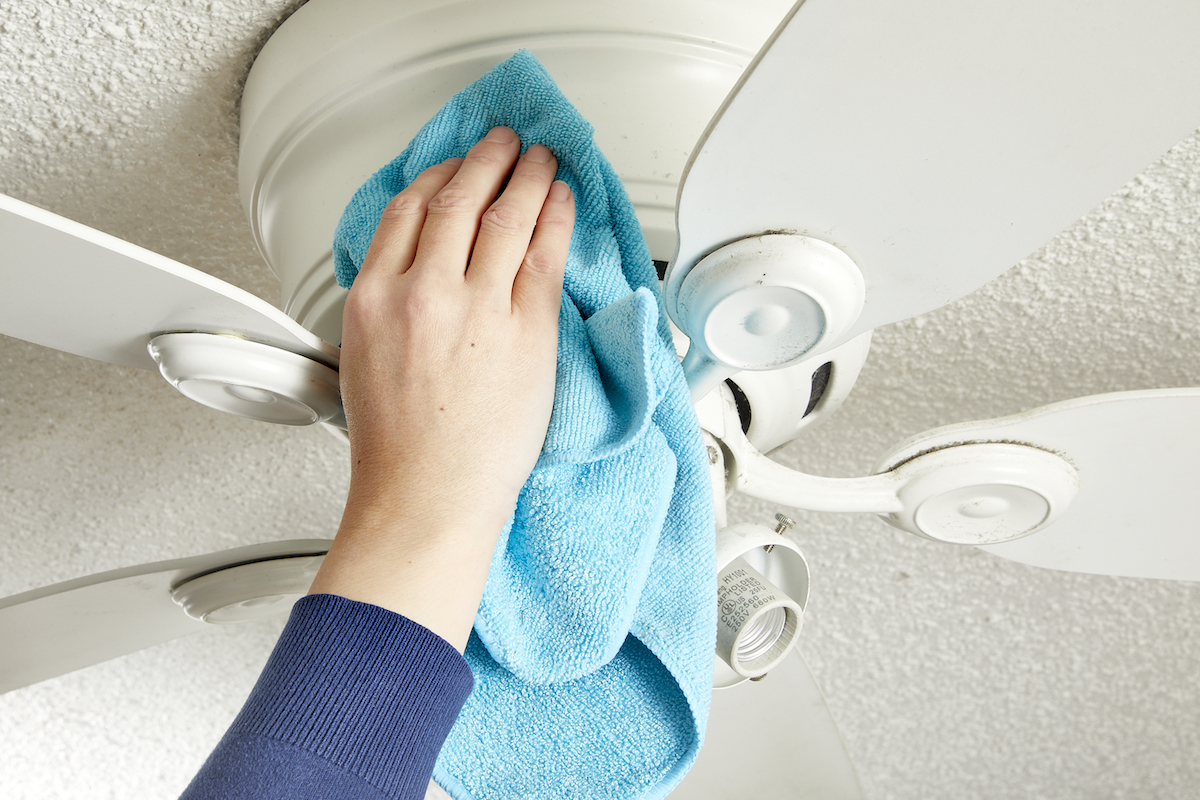
Gently wipe the lamp’s housing with a slightly damp microfiber cloth. Be sure not to get the inside of the light fixture or fan motor wet.
Some glass globes or shades have rubber gaskets around the base where they screw onto the fixture. These can dry out over time, so if the gasket on your fixture is worn or torn, either swap in a new gasket or substitute it with two or three heavy-duty rubber bands. Most modern ceiling fan light fixtures use only screws and a lipped base to hold the shade in place.
RELATED: Why Is My House So Dusty? 8 Common Culprits–and What to Do About Them
Step 4: Reattach the shades and replace light bulbs.
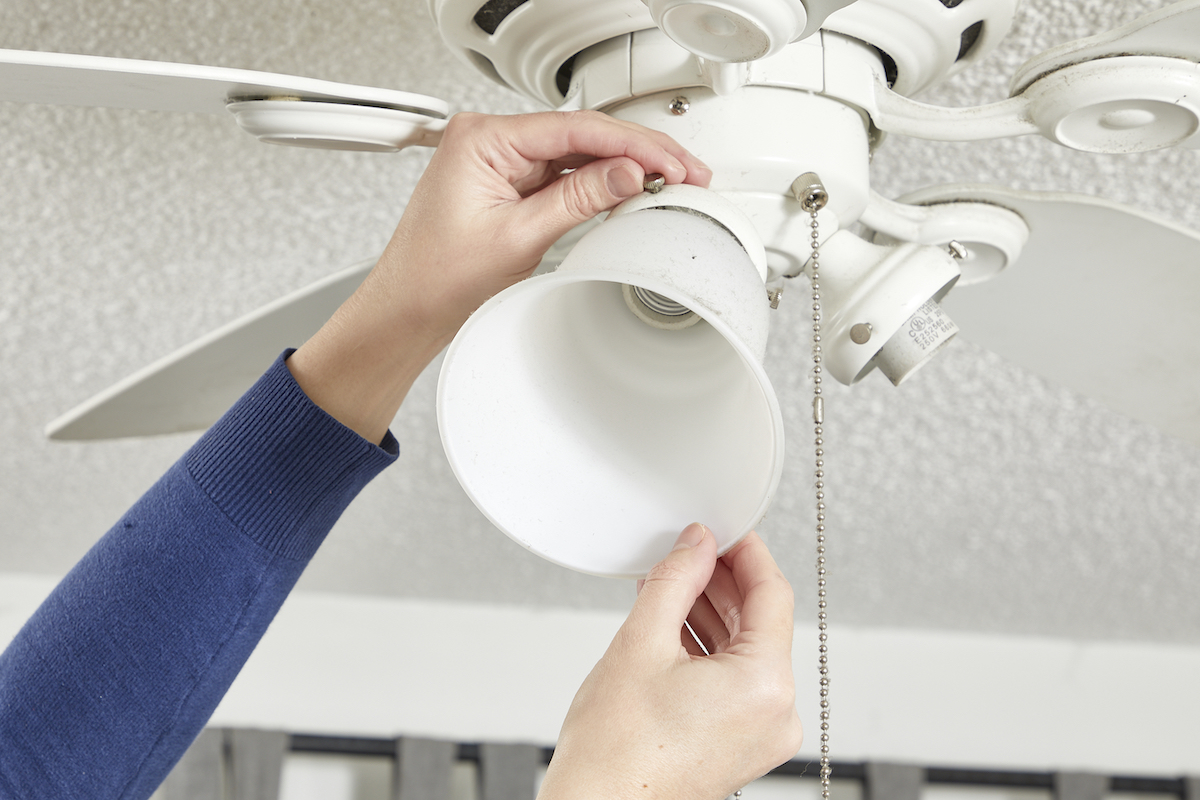
Replace the clean shades, using your fingers to tighten the mounting screws. Tightened screws keep the glass from rattling or shaking when the fan is operating. Check to make sure each mounting screw is tightened fairly evenly so that the shade or globe will rest level in its base.
Replace the light bulbs, or install new bulbs if they are burnt out. Some light fixtures require replacing the bulbs first, then screwing the shade in place. While you are in place near the fixture, consider switching your ceiling fan’s direction to match the season if you haven’t done so already.
Final Thoughts
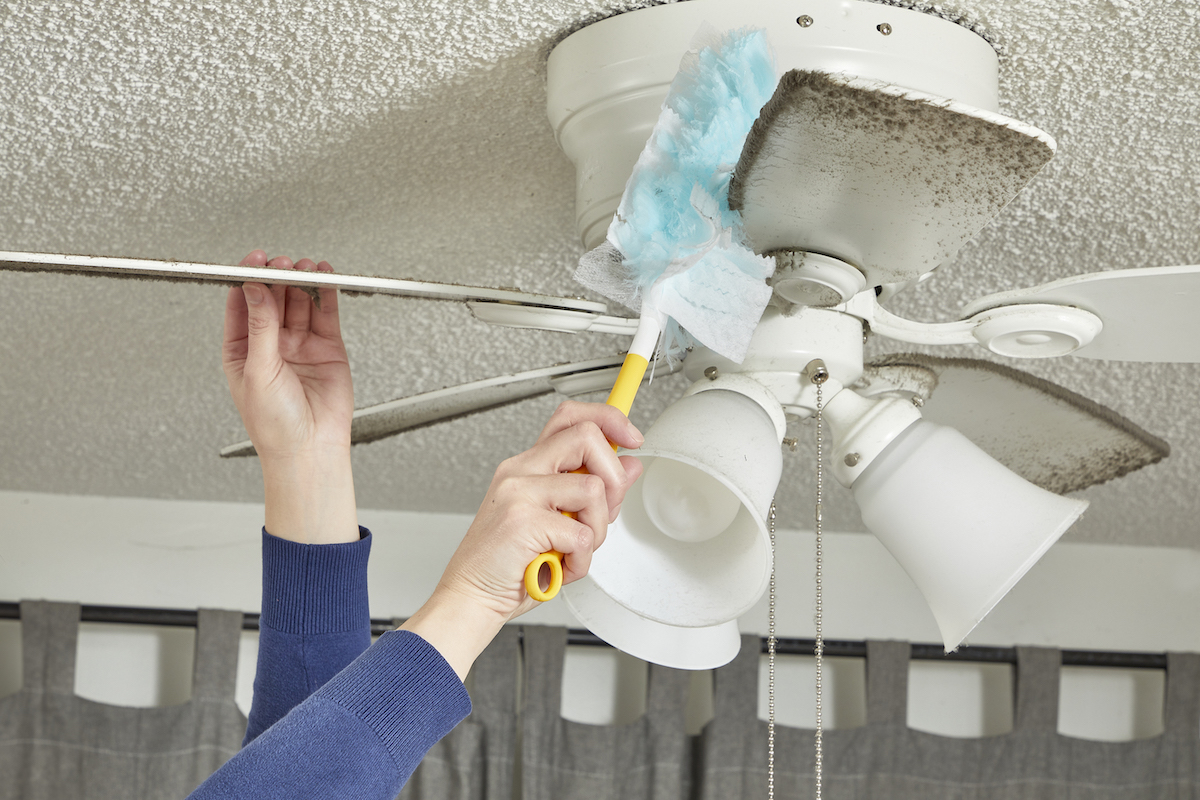
Even though you can’t see the tops of ceiling fan blades, they gather dust quickly. Regularly cleaning ceiling fans can cut down on dust in your home and prevent a thick buildup of dust and grease on the blades. Outdoor ceiling fans can gather even more dust, so wiping them off regularly prevents a tougher job cleaning a dirty ceiling fan before your next barbecue. The steps outlined above for how to clean ceiling fans can tackle dust on the blades and the ceiling fan light.
Of course, never try to clean a fan while the blades are moving. Turn the fan off and wait for the rotation to stop completely before taking any steps to clean your ceiling fan. Likewise, use care in all these steps to avoid pulling or pushing down on the blades or light. And don’t use the blades to steady yourself; they move. Use care when climbing on a step stool or ladder to reach blades, and invest in a ceiling fan duster with a telescoping handle.
Once done with your cleaning, sit back and relax under the gentle breeze of your dust-free ceiling fan.
FAQs
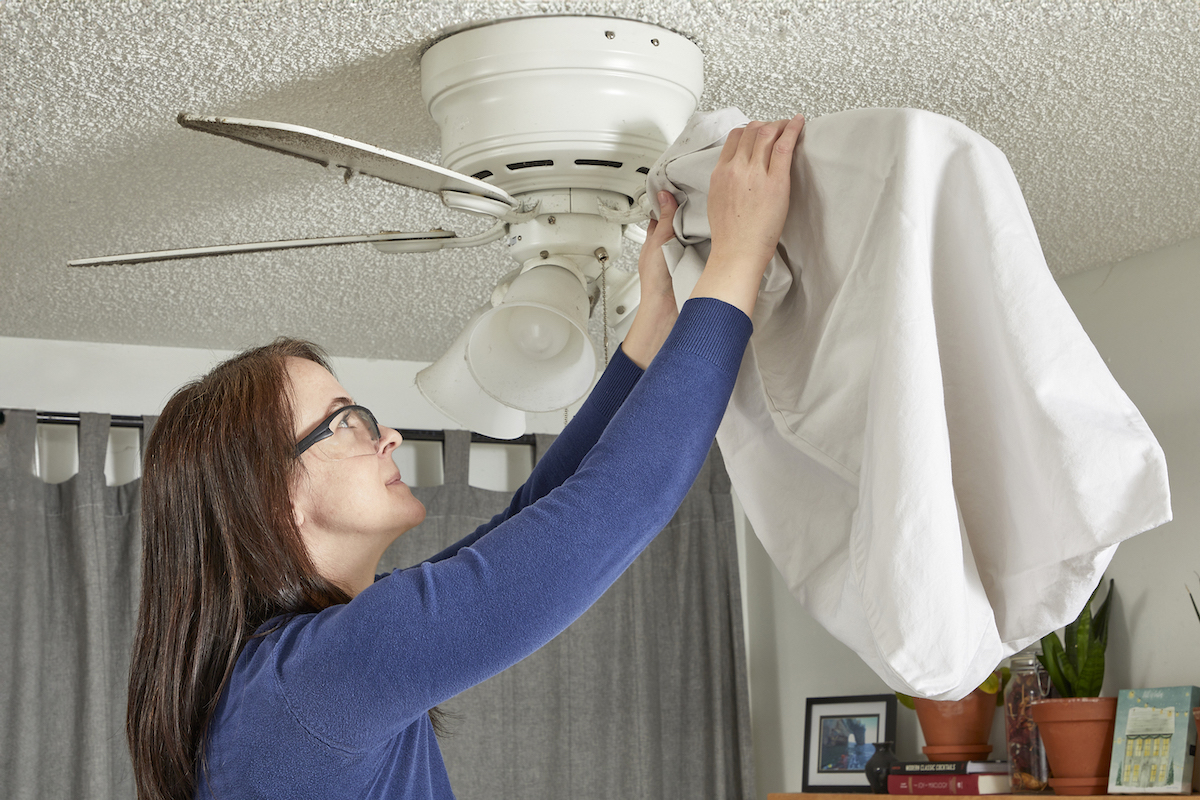
Learning how to clean a ceiling fan can help keep dust down in your home. Follow the steps in this article and review the answers below to frequently asked questions about cleaning ceiling fans.
Q. What repels dust on ceiling fans?
A good dusting spray can help reduce static and lessen the amount of dust that settles on ceiling fan blades. Keeping the home as dust-free as possible also helps. If your fan is easily accessible, add the blades to your regular dusting routine, using a soft dust brush or microfiber cloth.
Q. How do you clean a ceiling fan without getting dust everywhere?
If you are concerned about thick dust on your fan, lay an old sheet on the floor below the fan, stretching it out to safely place a ladder or step stool on it. The best way to clean ceiling fans without transferring dust to the floor and furniture below is to use a quality microfiber ceiling fan duster or cloth. A ceiling fan duster is designed to pick up dust on the top and bottom of the blade, holding much of it inside.
If you can safely reach the blades from a step stool, you also can use a large microfiber cloth. Wrap the cloth lightly around the top and bottom of the blade; most of the dust will cling to the cloth.
Using a pillowcase to clean ceiling blades is popular hack, since by wrapping the blade in the case, you can pull toward you and the pillowcase catches the dust. This might work well for blades that are especially dirty as a first step. However, the fabric will not remove that lower layer of dust, so you should then proceed to the steps above to fully clean the blades.
Q. How do I get thick dust off my ceiling fan?
For especially thick dust, you can begin with a pillowcase to gently wipe each blade and catch loose dust. Reach thick, gunky dust with a damp microfiber towel or damp disposable cloth (avoid using products that contain alcohol). Then proceed to wipe with dusting spray and a dry cloth or mop.
If the dust layer feels greasy, add some mineral spirits or degreaser. Avoid mineral spirits on the bottom of the blades if they have a design; the product might strip away the design or finish. A good dish soap should degrease the light globes or shades with a little soaking and wiping. And, keeping your home free of dust in general can keep thick dust from forming on the ceiling fan in the first place.

